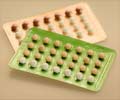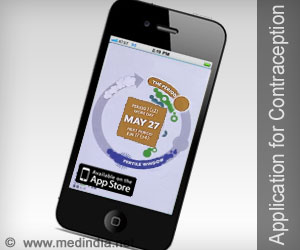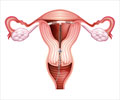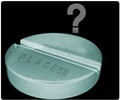An investigational one-year contraceptive vaginal ring containing Nestorone® and ethinyl estradiol was found to be highly acceptable among women enrolled in a Phase 3 clinical trial.

"Understanding the factors that influence women's satisfaction with and acceptability of a contraceptive method helps researchers and product developers design and test products that better meet their health and family planning needs," said Ruth Merkatz, Director, Clinical Development, Center for Biomedical Research at the Population Council. "Our results add to the growing body of evidence documenting the acceptability of our investigational contraceptive vaginal ring. With the development of this model, we can continue studying women's preferences for this and other vaginal rings to ensure that introductory and educational efforts are user-centric and responsive to women's needs."
Designing and Testing the Acceptability Model
The acceptability model was developed based on four objective domains of contraceptive vaginal ring use: ease of use (e.g., ease of inserting and removing the ring, remembering the schedule); side effects; expulsion of the ring and feeling the ring while wearing it (including awareness of the ring during sexual intercourse); and changes to sexual activity, frequency, or pleasure. A questionnaire was developed to assess these domains as well as overall satisfaction and adherence to instructions for use. Continuation of ring use was also evaluated.
The model was tested among 1,036 women enrolled in a Phase 3 clinical trial of the Council's investigational one-year contraceptive vaginal ring. They were given a questionnaire that measured the domains of ring use, overall satisfaction, and adherence to the regimen. The acceptability questionnaire was integrated into a study protocol across 12 trial sites in Latin America, the United States, Europe, and Australia over three years.
The study protocol was approved by the Council's Institutional Review Board and each site's ethical committee. All women provided informed consent. The questionnaires were translated into each site's local language, and were administered at the beginning of each woman's third monthly cycle of use, and again after one year (or at the time of study discontinuation).
Advertisement
Eighty-nine percent of women were satisfied with the one-year ring. Women who reported being satisfied found the ring easy to insert and remove, and did not experience changes in sexual pleasure or frequency of intercourse. Additionally, women who reported satisfaction with the ring were twice as likely to use the method correctly compared to women who reported dissatisfaction and 5 times as likely to use the ring for a full year. Women who reported dissatisfaction (11%) were more likely to report feeling the ring while wearing it and during intercourse, and to experience side effects associated with use.
Advertisement
- Practitioners are strongly encouraged to inform women about the possibility of experiencing hormonal and non-hormonal side effects, and counsel on managing side effects
- Comfort with inserting and removing the ring should be addressed during personal counseling with women, regardless of prior experiences with other vaginal ring products
- Guidance about feeling the ring or possibly expelling it is also necessary. With support from informed providers or experienced users, women can practice insertion to make sure they are inserting the ring correctly.
About the Investigational Nestorone® and Ethinyl Estradiol Contraceptive Vaginal Ring
The investigational one-year contraceptive vaginal ring is a long-acting, reversible contraceptive designed to provide protection against pregnancy for up to one year. It is currently in the late stages of clinical development.
The ring contains the progestin Nestorone®, an investigational new chemical entity that has been shown to be effective in preventing ovulation, as well as ethinyl estradiol, an FDA-approved, marketed estrogen product. Roughly 2¼ inches in diameter, the investigational one-year ring is soft and flexible, and women can easily insert and remove the ring without the assistance of a healthcare professional.
As demonstrated in clinical trials, the investigational one-year ring is designed to prevent ovulation by releasing a low dose of hormones through the vaginal walls and into the bloodstream. It is left in place for 21 days and removed for 7 days. A single ring can be used for up to 13 cycles (one year). Because it is designed to be effective for 13 cycles and designed so that refrigeration is not required, the investigational one-year ring may be a suitable option for women in developing countries who lack convenient access to a health care facility or pharmacy, and in areas where regular electricity outages--or lack of electricity--are a fact of life.
Source-Eurekalert















